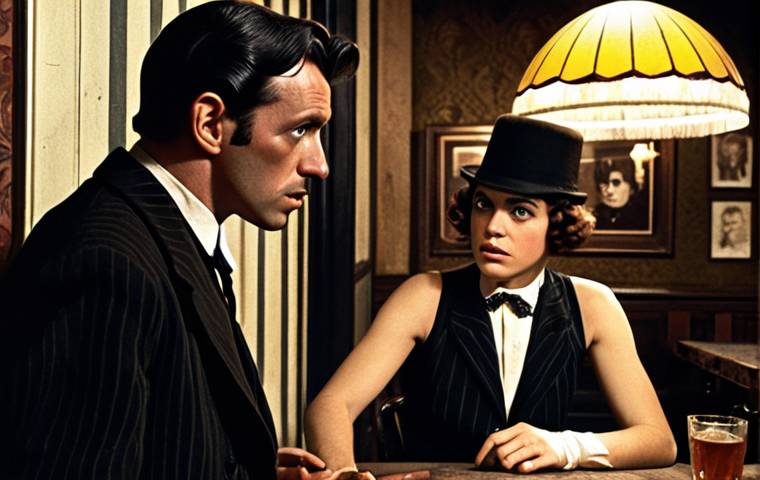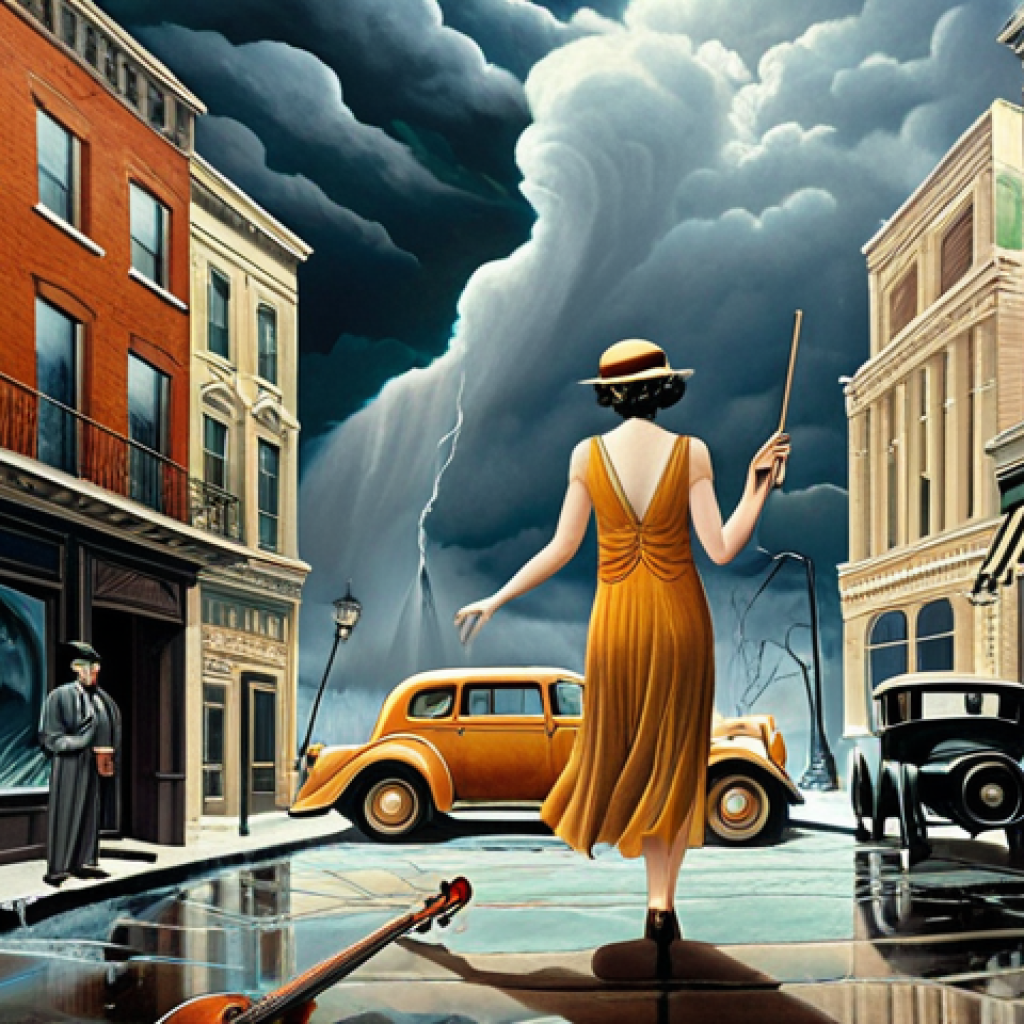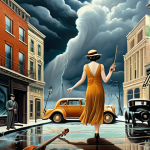Reverse: 1999 has definitely grabbed my attention with its unique time-traveling storyline and the eerie blend of historical settings with supernatural elements.
The game really nails that mysterious, almost noir-like atmosphere, and the characters are surprisingly deep, each wrestling with their own past and future.
Honestly, the narrative pulls you in from the start, making you question everything you thought you knew about time and reality. I’ve spent hours just trying to unravel the plot’s many layers, and it’s been a wild ride, to say the least.
It is truly one of the best storylines I have ever experienced in a mobile game. Let’s dive into the details below and get to the bottom of this captivating story!
Alright, buckle up, because we’re diving deep into the twisted timelines and captivating characters of Reverse: 1999. This isn’t your typical mobile game storyline; it’s a full-blown mystery wrapped in a retro aesthetic, and I’m here to break down what makes it so damn compelling.
Unraveling the Enigmatic Plot

Okay, so Reverse: 1999 throws you headfirst into a world where the Roaring Twenties are, well, reversing. Think flapper dresses and jazz, but with a healthy dose of temporal anomalies.
You play as Vertin, a Timekeeper tasked with protecting Arcanists – individuals with supernatural abilities – from the shifting timelines. I remember the first time I saw the “Storm,” this bizarre phenomenon that’s undoing history.
It felt like stepping into a surreal painting, with iconic landmarks dissolving into their past selves. Seriously, it’s visually stunning and incredibly disorienting in the best way possible.
The Timekeepers and Their Crucial Role
1. Timekeepers like Vertin are essentially temporal guardians, immune to the effects of the Storm. Their mission?
To observe, record, and, if possible, fix the anomalies. I found it fascinating how the game explores the weight of this responsibility. Vertin isn’t just a passive observer; she’s actively involved in shaping the narrative, making tough decisions that impact the fate of others.
It’s not just about preventing paradoxes; it’s about understanding the motivations behind the temporal shifts and the people caught in the crossfire.
Arcanists: More Than Just Superpowers
2. Arcanists are individuals who possess unique supernatural abilities in the world of Reverse: 1999. These powers range from controlling elements to manipulating objects with their minds, making them distinct and vital within the game’s narrative.
Each Arcanist is designed with a backstory that not only gives depth to their characters but also ties them into the overarching mystery of the Storm.
It’s like they’re not just characters in a game; they’re individuals with their own desires, fears, and secrets.
The Allure of Historical Anachronisms
Reverse: 1999 isn’t just about time travel; it’s about the fascinating collision of different eras. Picture Victorian-era detectives working alongside 1960s rock stars, all trying to navigate a world where history is literally unraveling.
I recall one mission where I had to decipher clues left by a futurist artist in a roaring twenties speakeasy. The juxtaposition was jarring, but it added this incredible layer of intrigue to the gameplay.
The devs clearly did their homework, weaving in real historical events and figures with their own fictional elements.
The Devil in the Details: Historical Accuracy
1. The attention to detail in Reverse: 1999 is something to behold. From the clothing and architecture to the slang and social norms, the game goes to great lengths to accurately portray different historical periods.
This isn’t just window dressing; it’s integral to the storytelling. The historical context informs the characters’ motivations, the plot’s twists and turns, and the overall atmosphere of the game.
It is a constant reminder that the past is not just a backdrop; it’s a living, breathing entity that shapes the present.
Blending Fact and Fiction
2. One of the coolest aspects of Reverse: 1999 is how it blends historical fact with fantastical elements. It’s a delicate balance, but the game pulls it off with aplomb.
The developers have taken real historical events and figures, and then twisted them in unexpected ways. This creates a world that feels both familiar and surreal, grounding the story in reality while also allowing for moments of pure imagination.
The history buffs will appreciate the nods to real events and figures, while those who love fantasy will be captivated by the supernatural elements woven into the story.
Character-Driven Storytelling at Its Finest
What truly elevates Reverse: 1999 is its cast of compelling characters. Vertin is not just a Timekeeper, but a complex figure grappling with the responsibility of her role.
There’s Schneider, the aloof but fiercely loyal Arcanist with a mysterious past. And then there’s Regulus, the rebellious rock star whose music seems to hold the key to understanding the Storm.
I found myself becoming invested in their personal journeys, their hopes, and their fears.
Schneider’s Enigmatic Charm
1. Schneider is one of those characters that just draws you in. She’s mysterious, aloof, and incredibly powerful.
The more you learn about her past, the more you realize how much she’s been through. It’s her complexity that makes her so endearing. Schneider is a character that will stay with you long after you’ve finished the game.
Regulus: The Rock Star with a Secret
2. Regulus is another standout character in Reverse: 1999. On the surface, she’s a rebellious rock star, but beneath that exterior lies a deep well of pain and longing.
The game slowly reveals her connection to the Storm. This element adds a layer of intrigue to her character.
The Importance of Ensemble Dynamics
3. Reverse: 1999 isn’t just about individual characters; it’s about the dynamics between them. The game does an excellent job of creating believable relationships and rivalries.
The interactions between the characters are often funny, heartbreaking, or both. This is the kind of stuff that makes the game feel alive and makes you want to keep playing to see how it all unfolds.
Exploring Complex Themes
Beyond the time-traveling shenanigans and supernatural battles, Reverse: 1999 delves into some surprisingly profound themes. The game grapples with concepts of identity, memory, and the nature of time itself.
What does it mean to be a Timekeeper, tasked with preserving a history that is constantly changing? How does the Storm affect the memories of those caught in its path?
These are the questions that the game invites you to ponder. It’s not just a fun romp through history; it’s a thought-provoking exploration of the human condition.
The game’s narrative is so deep and engaging that I sometimes feel like I’m watching a movie instead of playing a game.
Memory and Identity
1. The game really digs into how much our memories define who we are. When the timeline gets messed up, people’s memories start to fade or change, which leads to all sorts of existential crises.
It is fascinating to watch how the characters struggle to hold onto their identities. It made me think about how much our past shapes us, and what happens when that past becomes uncertain.
The Ethics of Time Travel
2. Time travel is cool, but Reverse: 1999 also explores the moral dilemmas that come with it. Should Vertin interfere with the timeline, even if it means saving lives?
What are the consequences of altering the past, even with the best intentions? It is a question that constantly haunts the characters. The game doesn’t offer easy answers, which I appreciate.
It forces you to consider the complexities of time travel and the potential dangers of playing God.
A Visually Stunning Experience
I can’t talk about Reverse: 1999 without mentioning its incredible art style. The game blends retro aesthetics with modern visual techniques, creating a look that is both nostalgic and cutting-edge.
The character designs are distinct and expressive, the backgrounds are richly detailed, and the animations are fluid and dynamic. Whether you’re exploring the bustling streets of 1920s London or battling bizarre creatures in a distorted version of the present, the game is a feast for the eyes.
Character Design and Animation
1. The character designs in Reverse: 1999 are a testament to the game’s overall aesthetic. Each character is instantly recognizable, with their own unique style and personality.
The animations are equally impressive, bringing the characters to life with fluid movements and expressive facial expressions. It’s clear that a lot of love and attention went into crafting each character.
Backgrounds and Environments
2. The backgrounds and environments in Reverse: 1999 are just as stunning as the character designs. Each location is meticulously crafted, with a level of detail that is truly breathtaking.
Whether you’re exploring a bustling city or a desolate wasteland, you can tell that the developers have put a lot of thought into creating each environment.
Turn-Based Combat with a Twist
Reverse: 1999 features a turn-based combat system that is easy to pick up but difficult to master. You control a team of Arcanists, each with their own unique abilities and skills.
The combat system is deep and strategic, requiring you to carefully consider your moves and coordinate your team to maximize their effectiveness.
Card-Based Skill System
1. Each Arcanist has their own deck of cards that represent their abilities. These cards are drawn randomly at the start of each turn, and you must choose which cards to play to attack, defend, or support your allies.
I love the added layer of strategy that this system brings to the combat. It forces you to think on your feet and adapt to the ever-changing battlefield.
Here’s a quick rundown of the Arcanist Classes:
| Class | Description | Role |
|---|---|---|
| Damage Dealer | Focuses on dealing high amounts of damage to enemies. | Offensive |
| Support | Provides healing, buffs, or debuffs to allies and enemies. | Supportive |
| Control | Specializes in controlling the battlefield through status effects. | Tactical |
| Survival | Excels at surviving and soaking up damage. | Defensive |
I find the tactical element super engaging and definitely keeps me coming back for more. It’s not just about raw power; it’s about how you use what you’ve got.
Why Reverse: 1999 Stands Out
Honestly, Reverse: 1999 has really carved out its own space in the mobile gaming world. The unique blend of historical fiction, supernatural intrigue, and deep character development makes it a standout title.
The combination of the complex narrative, beautiful visuals, and strategic combat makes it a complete package.
Final Thoughts: Is It Worth Playing?
So, is Reverse: 1999 worth your time? Absolutely. Whether you’re a fan of time travel stories, character-driven narratives, or strategic RPGs, there’s something to love about this game.
It’s a captivating experience that will keep you hooked from beginning to end. I have had such a fun experience playing it. Give it a try and see if you fall into the storm.
Wrapping Up
So, there you have it – my deep dive into the world of Reverse: 1999. It’s a game that’s constantly surprising me with its depth, its characters, and its sheer creativity. If you’re looking for a mobile game that offers more than just mindless entertainment, this might just be the time-traveling adventure you’ve been waiting for.
I can’t wait to hear what you think. Dive in, explore the Storm, and let me know your favorite characters and plot twists. Who knows, maybe we can unravel the mysteries of Reverse: 1999 together!
Happy gaming!
Cool Facts to Know
1. The game features voice acting in multiple languages, including English and Japanese.
2. Reverse: 1999 has a gacha system, which allows players to collect new Arcanists.
3. The game’s soundtrack is inspired by jazz, classical music, and electronic music.
4. Reverse: 1999 has a thriving community of players who share tips, tricks, and fan art online.
5. The game is available on both iOS and Android devices.
Key Takeaways
Reverse: 1999 is more than just a mobile game; it’s an experience.
The game’s unique blend of historical fiction, supernatural intrigue, and character-driven storytelling sets it apart from other mobile RPGs.
Whether you’re a fan of time travel stories, strategic combat, or complex characters, there’s something to love about Reverse: 1999.
The game’s stunning visuals, immersive soundtrack, and engaging gameplay make it a must-play for any mobile gamer.
Don’t be afraid to dive into the Storm and explore the mysteries of Reverse: 1999. You might just find yourself lost in its captivating world.
Frequently Asked Questions (FAQ) 📖
Q: Is “Reverse: 1999” worth playing if I’m not usually into mobile games?
A: Honestly, I was skeptical at first too, being more of a console gamer. But “Reverse: 1999” really surprised me. The story’s so gripping and the art style is just stunning.
It’s not your typical mindless mobile game. Give it a shot – you might just get hooked like I did. Plus, it’s free to start, so what do you have to lose?
Q: Does “Reverse: 1999” require a lot of grinding or in-app purchases to enjoy the story?
A: From my experience, you can definitely enjoy the main storyline without spending a dime or grinding endlessly. They’re pretty generous with rewards, and the difficulty curve isn’t too steep.
Of course, if you want to optimize your team or get certain characters, you could spend money, but it’s not necessary to enjoy the core narrative. I’ve been playing for weeks and haven’t felt pressured to open my wallet.
Q: What’s the best thing about “Reverse: 1999” that sets it apart from other games?
A: For me, it’s the sheer depth and originality of the story. So many games rehash the same old tropes, but “Reverse: 1999” feels fresh and unique. The way it weaves together historical events with supernatural elements is just brilliant.
It’s the kind of game that makes you think about what you’re playing, not just mindlessly tap buttons. The voice acting is phenomenal, too – really brings the characters to life.
It’s a complete package, really.
📚 References
Wikipedia Encyclopedia
구글 검색 결과
구글 검색 결과
구글 검색 결과
구글 검색 결과
구글 검색 결과




